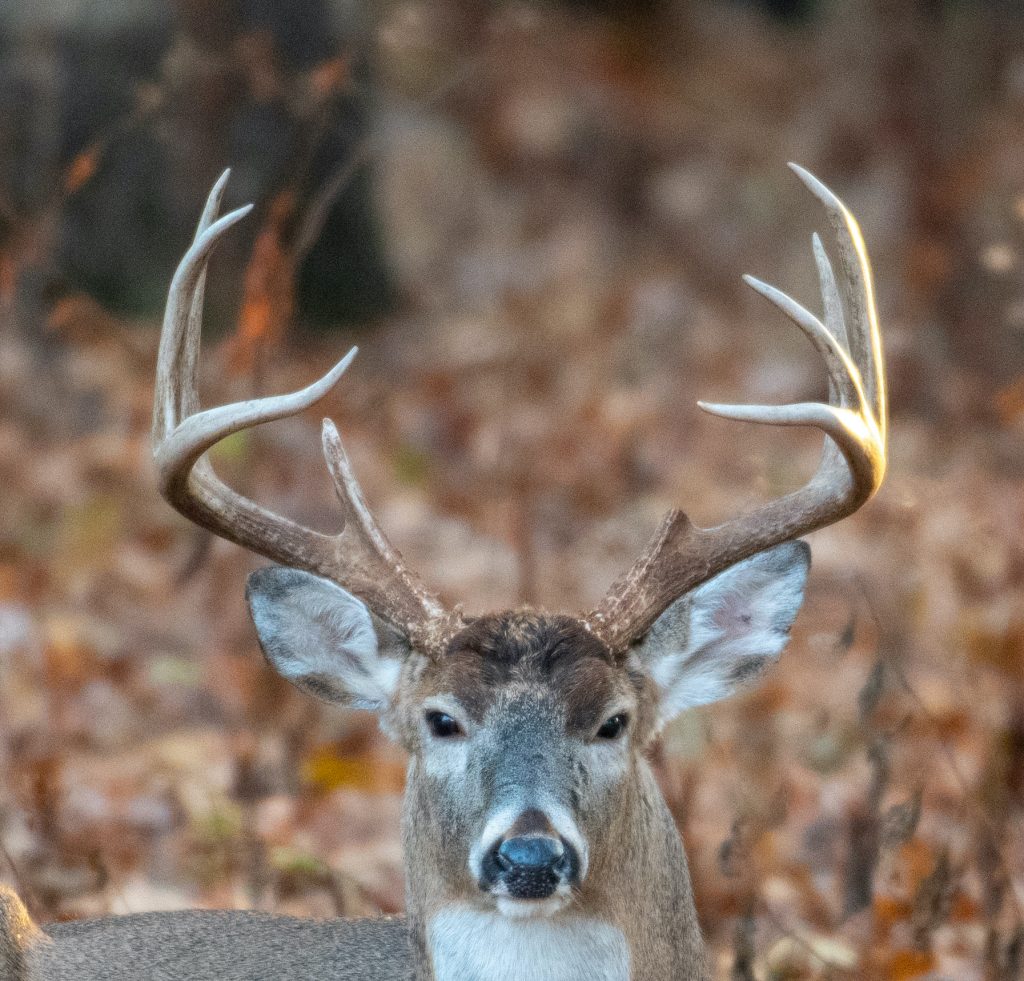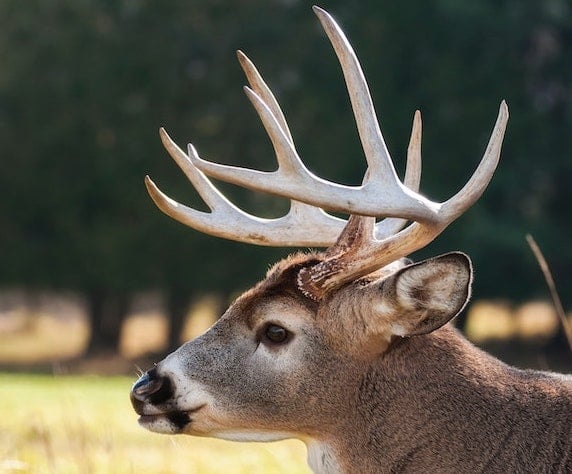For centuries, hunters have been greatly fascinated by deer antlers because of their capability to grow quickly. In fact, one common question about deer is, Do deer antlers get bigger each year?
A plain and simple answer to this question is — YES. Antlers continue to grow each year all throughout the deer’s life. In the
What are antlers?
If you’re not familiar with antlers, these are the horn-like features found on the male members of the deer family which includes the elk, caribou, and the moose to name a few. Most hunters’ desire to capture a deer is primarily driven by the need to get their hands on the antlers.
Though many hunters refer to antlers as horn, they are not actually horn. Antlers are bones which form from the pedicle of a male deer’s frontal skull. The pedicles become noticeable during the first four to five months of a young male fawn’s life. However, these pedicles are not considered antlers.
The male members of the deer family, commonly referred to as bucks, will begin growing true antlers on the first spring after they were born. That is around the first ten to twelve months of their lives. The antlers will start growing around March and April, eventually reaching full growth around the months of August and September.
Although antlers naturally grow on male deer members, the caribou species is widely known to have both its males and females grow antlers.
Why Do Deer Antlers Get Bigger Each Year?
Antlers can grow at a rate of ¼ to one inch a day, making them one of the fastest growing tissues in mammals. Antlers will continue to grow each year that the buck lives and will reach its full-size potential until around four years of age.

The growth of antlers is typically regulated by the buck’s testosterone level (male hormone) which, in turn, is controlled by day length called photoperiod. The photoperiod refers to the “brain clock” that measures the length of light and dark, using the information it gathers to control the production of hormones in bucks.
In essence, the longer the bucks are exposed to light, the more testosterone they produce. Tests conducted in recent years by both researchers and hunters revealed that deer kept in constant light grew their antlers faster and lost about three sets of it in just two years. On the other hand, bucks kept in the light for limited hours were unable to shed and grow new antlers.
Bucks usually sport their largest sets of antlers when they’re about five to six years of age. Beyond that, the age of the deer and their health will start affecting the growth of the antlers.
Contrary to the belief that the antlers’ purpose is to protect bucks from predators, biologists believe they are more for social ranking. This is due to the fact that antlers are typically shed during winter when predators pose the greatest threat to any deer.
Antler Shedding
Antler shedding is the process in which the bucks shed off their antlers completely to grow a new set of antlers. Shedding happens every year in between the months of January and April. At times, bucks shed their antlers earlier depending on three factors: age, health, and location of the deer.
Antlers are shed due to the decline of testosterone production following the rut. During summer when the male hormone is at its production peak, the high level of testosterone constricts the veins and arteries surrounding the deer’s velvet. The velvet is the hair-like membrane that covers the antlers and supplies them with blood and nutrients needed as they grow.
Without enough nutrients and blood to sustain it, the velvet will wither and will eventually fall off. To expedite the shedding process, bucks will be often seen rubbing their antlers against trees or other hard surfaces. This process will continue all throughout the deer’s life.
Antler shedding help bucks get rid of damaged or broken antlers since the latter are deemed extremely important in a male’s show of dominance and in acquiring the favor of females. Broken antlers decrease a buck’s breeding privileges.
Researchers also suggest that antler shedding aids in a buck’s capability to re-grow larger and stronger antlers as it lives. The process allegedly allows the antlers to keep pace with the buck’s growing body size as it matures.
Typically, healthy males that live in mild climates and get more supply of food get to keep their antlers longer than bucks in more impoverished conditions and locations. Peak condition bucks can grow stronger tissues which result in an incredible antler-to-head toughness.
Can antlers be used to determine the age of a buck?
If you believe that the size or number of antlers defines the real age of a buck, you’re dead wrong. Regardless of the many stories shared by hunters, antlers are considered unreliable when it comes to determining the age of bucks. The size and number of antlers a buck grows are purely indicative of the animal’s diet, habitat, and heredity; not its age.
Using antlers to determine the age of a deer can be misleading for a number of reasons. For instance, metabolic stress can significantly reduce an antler’s quality, shape, and size. Furthermore, tissue damage can cause abnormal patterns in the antler’s growth cycle.
If you want to make a definitive guess on the age of a deer, you might want to consider looking at these body features instead of the antlers.
- Belly – Normally, the older a deer gets, the more its belly sags. However, it’s still good to remember that belly sagging can also be an indicator of diseases like abdominal fluid build up and ruptures in the deer’s abdominal wall.
- Rump – Like with humans, a buck’s backside gets rounder and more prominent as the animal age. Deer in prime age tend to have angular rumps. However, rumps also tend to be angular when bucks suffer from diseases and old age.
- Side profile – The side profile can provide a better indication of a deer’s age. Typically, the side profile of the antlers resembles a rectangular shape. This becomes more evident as the deer matures.
Technically, there is really no precise way of identifying the age of a deer, especially if you are just looking at the animal while you are hunting. However, observing the abovementioned physical features in conjunction with each other can help you guess it better.
Where are bucks with the largest antler sizes commonly found?
Again, the size of the antlers is dependent on three significant factors: the age, location, and habitat of the deer. Generally speaking, young males that are situated in areas with good weather and have access to vast supplies of food can grow bigger antlers. Below states are home to some of United States’ deer with the most massive racks.

- Texas
- Mississippi
- Iowa
- Georgia
- South Carolina
- Kansas
- Missouri
- Indiana
- Kentucky
As you noticed, these states are mostly known for good weather and vegetation that are both needed for bucks to grow their antlers to its fullest sizes. To date, Texas, Iowa, and Kansas are considered homes to the largest deer in the country when it comes to body mass and antler size.
Key Takeaways
Here are some key takeaways from this article that you should always remember about deer.
- Antlers grow bigger each year as the deer matures.
- An antler is not a horn. Antlers are honeycomb-liked bones that grow from the pedicles of a male deer’s frontal skull.
- Antlers are grown by male members of the deer family with the exception of the caribou or the reindeer. Reindeer males and females are both known to grow antlers. Females can do so because of the high production of testosterone or male hormone in their body. However, their antlers are often found to be shorter or deformed.
- Bucks shed their antlers and grow new one every year. Shedding helps bucks to get rid of broken antlers and develop bigger and stronger ones.
- Healthy male deer living in locations with good weather and habitat can keep their antlers well until spring.
- Antlers can’t be used to identify the age of a deer. The size of antlers can instead be used to determine the type of environment and diet of the animal.
- Looking at a deer’s physical features is not a precise way of identifying the animal’s age.
Reminders
While deer hunting is not banned in the United States, it is highly regulated by state governments. Make sure that you have secured all the necessary permits needed before you go hunting. Since the activity is controlled by state governments, the rules and policies per state may differ from each other.
